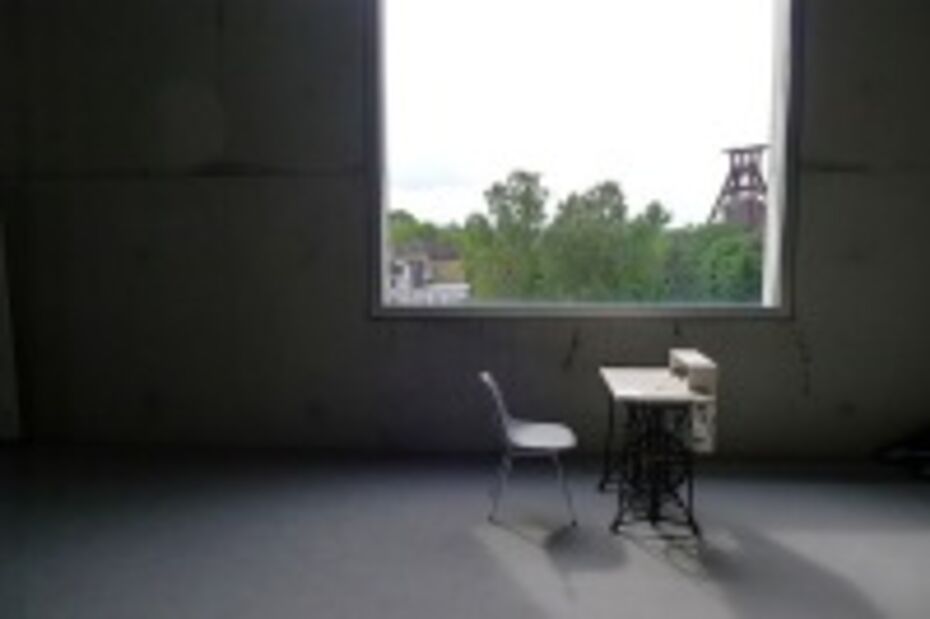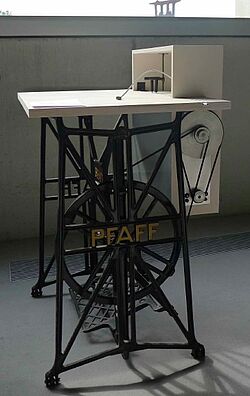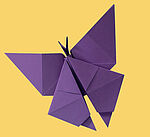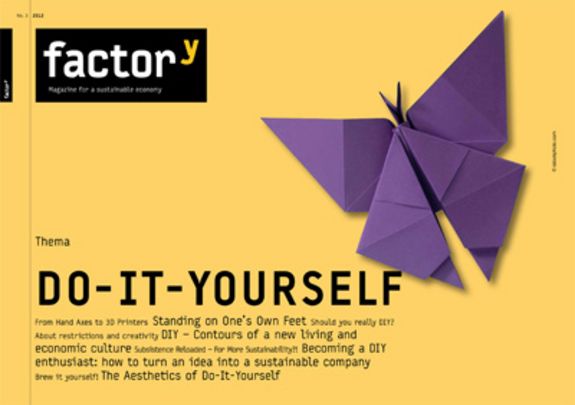Do-it-yourself

The Aesthetics of Do-It-Yourself

Crochet needle vs. Apple MacBook and creative solutions vs. industrial products: how does the DIY movement influence young designers and how does DIY contribute to the concept of aesthetics? What do resource-saving design projects in the age of prosuming look like? Marion Digel, a professor at the Folkwang University of Arts in Essen, answers these questions in an interview with Ralf Bindel.
Translated by Yin Yu, Mehmed Sariyildiz, Miriam Handrick
Ms. Digel, will the passion of people for DIY, fab labs, and pre-fab products make young designers redundant?
The DIY movement is not new at all. Its beginnings go back to the 1950s, reaching its peak in the 1970s. As the Whole Earth Catalogue shows, designers have always influenced the DIY movement. Young designers are still engaged on a conceptual level as the pre-fab projects such as e-desk or KEEP show.
Do these projects combine DIY and resource saving?
As a reaction to the debates on sustainability and the DIY movement designers come up with surprising projects. The so-called e-desk, presented in Yuki Ishiguro’s diploma thesis, uses the pedal system of a sewing machine to charge mobile phones and laptops. KEEP, Johannes Kunz’s bachelor’s thesis, modernises and lends aesthetic appeal to older Hi-Fi systems. While working at the e-desk, you can charge the battery of your notebook and keep fit at the same time. KEEP will help you avoid tons of electronic waste.
But you have to be interested in saving resources, don’t you?
Yes. Both theses build on different DIY concepts and rely on the consumers’ sense of ecological responsibility. These concepts do not point the finger, but use people’s interest in DIY and their emotional connection to their devices. Once you arouse their interest, they get involved in resource saving.
Both projects also reveal a new kind of aesthetics.
The e-desk combines the aesthetics of the industry culture with Japanese minimalism, while KEEP combines the old with the new. The KEEP project gives old devices a new look, while still preserving the peculiarities of former generations. KEEP thus transforms your home into a unique place in our age of digital technology.
How important is aesthetics?
KEEP is not a new device. Instead, durable ones are being reused. This gives the opportunity to get something new without wasting resources. The "heat-shrink-tubing" provides a note of nostalgia and gives the HiFi-system a new identity. It is also important to note that everyone can build the system themselves due to its simplistic nature. The aesthetics of improvisation.
But not everyone is so keen on the idea …
Well, students are, even though many of them purchase mass products (e.g. those made by Apple). They question the concept of aesthetics in our modern society, which is influenced by mass-produced articles. But even Apple focuses on minimal material usage just as in the minimalistic aesthetics of DIY.
Are there any rules to follow in order to reach the promising -future of the aesthetics of DIY?
In case there is a typical creative characteristic of DIY, we must refer to it as an individualised juxtaposition of different cultural influences. I am certain that there are creative ‘outgrowths’ just as there were in the beginnings of digitalising graphic design. However, even these aim to challenge the current concepts of aesthetics.
What are the implications for designers?
The role of the designer manifests itself in making man interact with objects or concepts of ecological consumer behaviour. If these concepts are open for interpretation, an aesthetic of imperfection, the improvised and the modifiable is created. The result is a rather open concept of aesthetics that young designers adopt.
Do you believe in the feasibility of such projects?
This DIY movement will spread if the aesthetics prove popular and people enjoy getting involved. At the moment, we have to speak of a countermovement to mass consumption and I believe that this trend will go on. This will give us the opportunity to come up with ideas for concepts in less developed countries.
How popular are DIY and resource saving among design students?
It depends on the research focus of the university, of course. The students here in Essen are already thinking more about the significance of production and consumption. If students are allowed to act as driving forces in the production and consumption process, they will feel far more excited than just designing a case. Such creative designers are strongly in demand, especially in terms of strategic development.
But projects like e-desk or KEEP have a rather modest e-ffect on resource saving.
It is the addition of the small effects that leads to the great effect. You have to make consumers aware that they can have a major impact on resource saving by contributing little by little. And this concept can be marketed as well. I would say that more than half of our students want to have an effect on society. In this regard, ecology is not the only aspect of sustainability design; social aspects such as inclusion and participation are also important. Moreover, sustainability design suggests creating products that bring their users pleasure.
Does prosuming, i.e. the participation of consumers in the design and production process, play a role for young designers?
Yes, indeed! We pay considerable attention to consumer behaviour, conduct surveys, and try out new concepts and models in cooperation with our users. Moreover, our students already know what prosuming is all about because they grew up in the age of prosuming. But the individualisation of products still has its limits: consumers need role models and guidance. Within these limits, however, there is a lot of freedom to design.
The e-desk is Yuki Ishiguro’s diploma thesis at the design faculty of the Folkwang University of Arts in Essen. An old sewing machine, which is still produced today, forms the basis of this desk. While you pedal, the desk’s belt drive is activated and its dynamo produces electricity, which is then stored in a battery. You can connect your laptop or mobile phone through various interfaces to the e-desk and benefit from the electricity you have just produced yourself.
This project was supervised by: Prof. Marion Digel, Prof. Claudius Lazzeroni
Beiträge online
DO-IT-YOURSELF

- From the handaxe to desktop fabrication
- Standing on One’s Own Feet
- DIY – Konturen einer neuen Lebens- und Wirtschaftskultur
- Should you really DIY?
- The Aesthetics of Do-It-Yourself
- Dann brau es doch selbst!
- Faires, Gutes und Schönes
News zum Thema
- 10/2013 | Crowdfunding for Sustainability-Maker
- 08/2013 | A Map for sustainable shopping in NRW
- 08/2013 | Start of the english version of factory
- 01/2013 | Unmotivated, uninspired, uninvolved
Themen
- The Domino Effect: the Mobility Transition as an Engine for the ‘Great Transformation’
- Cities Use the Space
- Decarbonization by 2030
- The fear of biting the hand that feeds you
- Where investing is a pleasure
- Why divestment is going to change the world
- A Robin Hood tax for climate protection
- May the Force Be with Us
- Modern Strategies
- The prerogative of interpreting the future now lies with the companies involved in climate protection”
- From Negotiating to Trading Equitably
- Can a donkey be tragic?
- Rethink rather than rebound: a sufficiency revolution must precede the efficiency revolution
- On Rebound, Prebound and Performance Gaps
- So Let Us Seize Power Then!
- With Common Property Against Political Failure
- So Let Us Seize Power Then!
- The Comforting Beauty of Failure
- “It Is Not Impossible at All.“
- Resource-light shopping
- Men Have Not Stopped Giving the Advantage to Women – So Far
- Toothpaste for Princesses and Soup for Pirates
- It is about equality
- A nice day
- Initiative instead of frustration
- The right ingredients
- Resilient for Life
- Not only, but also
- Appreciation – more please!
- Worth more than money
- Learning to value the value of goods
- Worth and Values
- The Transformative Power of Science
- Historically effective: How innovation and technology transform
- The Disappearance of Products
- Growing Older 101
- Columbus’ Egg
- It Works! In Theory at Least ...
- What If...?
- Analysing Separately – Thinking and Acting Together!
- Let’s Break Away from Determined Breaking Points
- More Gold in Waste than in Mines
- The art of separation
- Should you really DIY?
- The Aesthetics of Do-It-Yourself
- Standing on One’s Own Feet
- From the handaxe to desktop fabrication
- Using Shares to Survive the Crisis
- When Citizens participate
- Possess to Participate
- The Right Growth at the Right Time
- Gunter Pauli and Blue Economy
- When Sustainability Grows
- How we treat Growth
- Illusions about Growth

